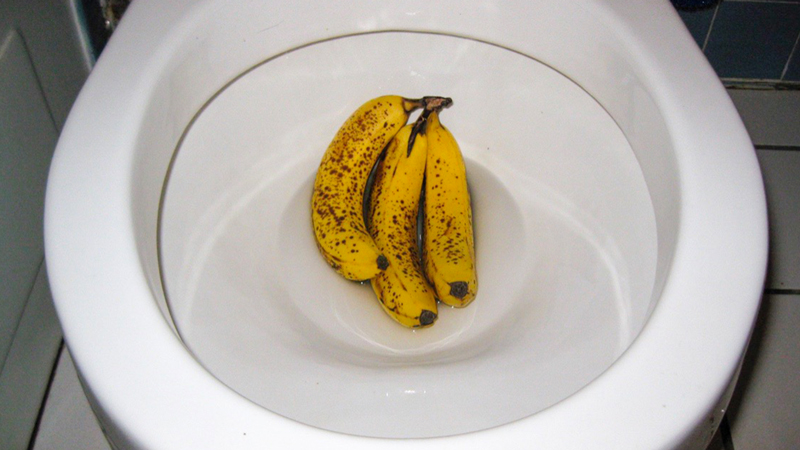We have uncovered the article involving Think Twice Before Flushing Food Down Your Toilet listed below on the internet and think it made good sense to discuss it with you on this page.

Introduction
Many individuals are commonly confronted with the issue of what to do with food waste, particularly when it comes to leftovers or scraps. One usual question that occurs is whether it's fine to purge food down the bathroom. In this post, we'll delve into the reasons that individuals may consider flushing food, the repercussions of doing so, and different approaches for proper disposal.
Reasons that people could consider flushing food
Lack of understanding
Some individuals may not understand the potential injury triggered by purging food down the toilet. They may erroneously believe that it's a harmless technique.
Comfort
Flushing food down the toilet might feel like a fast and easy remedy to disposing of undesirable scraps, specifically when there's no neighboring trash bin readily available.
Negligence
In some cases, people might just choose to flush food out of large negligence, without thinking about the consequences of their actions.
Effects of flushing food down the bathroom
Ecological impact
Food waste that ends up in rivers can contribute to air pollution and harm aquatic communities. Furthermore, the water made use of to purge food can strain water resources.
Plumbing problems
Flushing food can cause blocked pipelines and drains, creating expensive pipes repair services and hassles.
Types of food that must not be purged
Fibrous foods
Foods with coarse structures such as celery or corn husks can get entangled in pipes and create clogs.
Starchy foods
Starchy foods like pasta and rice can soak up water and swell, resulting in clogs in pipes.
Oils and fats
Greasy foods like bacon or food preparation oils need to never ever be flushed down the bathroom as they can strengthen and cause blockages.
Appropriate disposal techniques for food waste
Making use of a garbage disposal
For homes equipped with garbage disposals, food scraps can be ground up and flushed through the pipes system. However, not all foods are suitable for disposal in this manner.
Recycling
Particular food packaging products can be recycled, lowering waste and reducing ecological effect.
Composting
Composting is an environment-friendly means to take care of food waste. Organic materials can be composted and made use of to improve dirt for gardening.
The significance of appropriate waste management
Minimizing ecological harm
Proper waste administration techniques, such as composting and recycling, aid decrease contamination and preserve natural resources for future generations.
Protecting pipes systems
By staying clear of the practice of flushing food down the toilet, home owners can prevent pricey pipes repairs and maintain the stability of their plumbing systems.
Final thought
Finally, while it may be alluring to purge food down the toilet for benefit, it is necessary to recognize the possible effects of this action. By taking on appropriate waste monitoring techniques and dealing with food waste responsibly, people can add to healthier pipes systems and a cleaner atmosphere for all.
FLUSH FOOD DOWN THE TOILET?
FLUSHING FOOD CAN CAUSE BLOCKED DRAINS IN YOUR HOME
All of the plumbing fixtures in your home are connected to the same sewer pipe outside of your home. This outdoor sewer pipe is responsible for transporting all the wastewater from your home to the Council sewer mains. Even small pieces of food that go down the kitchen sink can cause problems for your sewer. It should therefore be obvious that flushing larger bits of food, such as meat, risks a clog in either the toilet itself or the sewer pipes. Flushing greasy food is even more problematic because oil coagulates when it cools, coating the interior lining of your pipes.
THE TOILET IS NOT A BIN
Food isn’t the only thing that people shouldn’t be flushing down the toilet. People use the toilet to dispose of all kinds of things such as tampons, makeup wipes, dental floss, kitty litter and even underwear. Water goes to great lengths to educate residents about the high costs and stress placed on wastewater treatment systems simply from people flushing the wrong stuff down the toilet. It costs taxpayers millions of dollars each year, and homeowners thousands in blocked drain repairs.
FLUSHING FOOD IS A WASTE OF WATER
Flushing food is a waste of our most precious resource - water. In June this year Level 1 water restrictions were introduced to protect water supply from drought conditions. Much of New South Wales continues to be affected by prolonged drought with recent figures revealing up to 97 per cent of the state remains in drought. Depending on whether you have a single or dual flush toilet, every single flush uses between five and 11 litres of water. In the current climate this is a huge amount of water to be wasting on flushing food that should be placed in the bin (or better yet, the compost).
https://www.jabplumbingsolutions.com.au/blog/can-you-flush-food-down-the-toilet

I'm certainly very interested by What Can Happen If You Flush Food Down the Toilet? and I am praying you appreciated the article. Loved our piece? Please share it. Help others find it. Thanks so much for going through it.
Schedule A Service Call